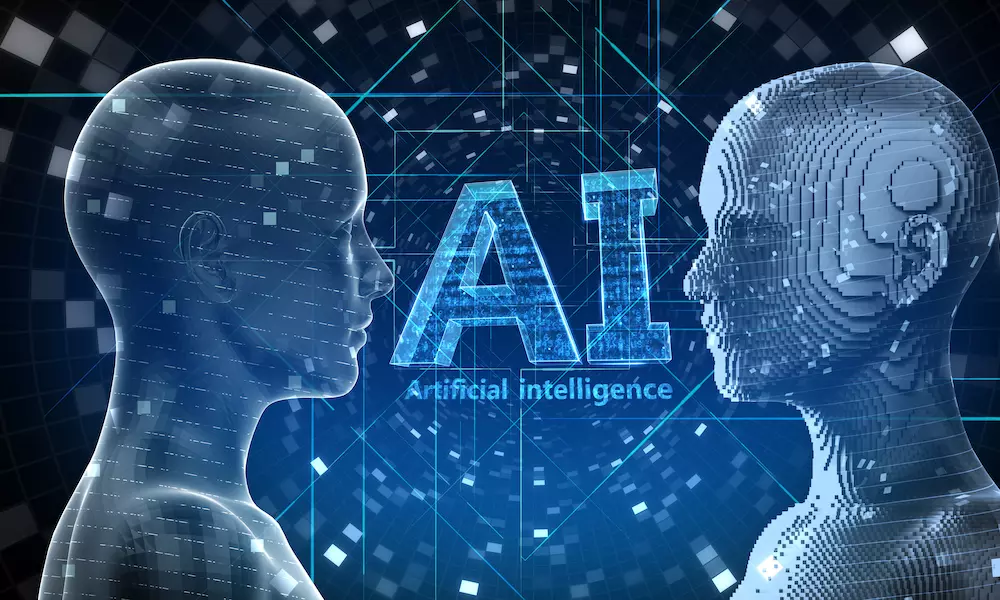Security
How Machine Learning Is Used In Enterprise Data Security

Companies are creating and handling more data than ever before. Keeping so much enterprise data secure has become increasingly challenging, even for organizations that have dedicated many resources. Hackers have taken notice and are employing ever-more sophisticated attack strategies.
To successfully combat the ever-changing threat landscape, organizations must utilize the most cutting-edge security tool available: machine learning. Initially used almost exclusively for data analysis, machine learning is now essential to the most effective enterprise data protection strategies.
What Is Machine Learning?
Often used interchangeably with the term “artificial intelligence,” machine learning is, in fact, a separate branch of the larger field of AI. Machine learning consists of training and testing algorithms with datasets. The more data available, the better trained an algorithm will be.
Ideally, the algorithm will learn from training data patterns to apply to new data. For example, an algorithm trained on marketing data that includes the number of customers contacted, and the number of goods purchased might identify a pattern between certain groups of consumers and those most likely to make a purchase.
A company can then use this information to create a more targeted marketing strategy based on the probability of a customer buying a good or service.
Machine learning is applied in several industries because it is versatile and capable of providing predictive insights, whether personalized marketing or enterprise data security.
The Data Landscape
2017 Symantec discovered 100 new malware families – a 36% global increase over the previous year. According to Gemalto, these data security loopholes didn’t go unnoticed, as over 2 billion data points were compromised in the first half of 2017 alone.
While HIPAA legislation, the PCI Data Security Standard, and most recently, GDPR provides strict rules and regulations concerning how companies must use, store, and protect consumer data, they do not apply to every industry or guarantee against a data breach.
The enterprise’s data security level varies significantly from one company to the next. A Centrify and Dow Jones, Customer Intelligence study reported that American corporations spent 86 billion on security in 2017. Yet, over 2/3 of those surveyed had their data breached five times or more within the same period.
Today, 80% of all data is stored by companies. A report by CSC predicts that by 2020, enterprises will be managing 28 zettabytes of data. One zettabyte is the equivalent of 1 billion gigabytes. That is an enormous amount of data to protect.
Data Breach Laws
Enterprise data includes both internally and externally communicated data. A breach within an organization, especially at the HR or administrative level, could prove disastrous. Sensitive information about employees’ addresses, compensation, and government identification data could be discovered.
Likewise, an administrative attack could give malicious agents a backdoor into the company’s customer data, financial transactions, and development processes, costing a business millions.
Nearly every state requires companies to notify their customers in case of a data breach. Referred to as Personally Identifiable Information, this includes Social Security numbers, driver’s license numbers, financial account numbers (e.g., bank/investment accounts), and, in some cases, medical data.
While states currently hold the power to prosecute companies that violate these laws, many believe that federal legislation isn’t far behind.
Implementing a flexible yet predictive data security strategy ahead of a federal mandate can help reduce the likelihood of a severe attack and or mitigate the fallout from one should it occur.
Machine Learning and Data Protection
Anti-malware software is usually signature-based; it identifies the unique digital fingerprint of a malicious program and then monitors specific devices to ensure that the same code doesn’t reappear. If it does, the software blocks it by preventing the code from executing.
But machine learning-based security systems work differently. Instead of looking for a specific pattern, they learn to identify the characteristics that make an event or action malicious. This is especially useful when preventing attackers from compromising employee credentials, one of enterprises’ most common and significant data security risks.
Machine learning is more flexible than traditional malware and more adept at detecting a wide range of malicious threats. The threat landscape is constantly changing, and data protection strategies need to be able to keep up with attacks on operating systems, software, and even processing chips (e.g., Spectre and Meltdown), all of which can wreak havoc on an enterprise’s ability to operate and maintain the trust of its clientele.
Elie Bursztein, who leads the Google anti-abuse team, says, “Before, we were in a world where the more data you had, the more problems you had. Now the more data, the better…” She is referring to the capabilities of machine learning, specifically deep learning algorithms, which utilize neural networks that mimic the human mind to train and evolve and make independent judgments about each new data threat.
Google uses machine learning to detect payment fraud, safeguard its cloud service, and identify compromised systems.
The Defense Advanced Research Projects Agency (DARPA), a US Defense Department branch, also uses machine learning to protect data. The agency can identify and categorize threats in real-time by reverse-engineering malware.
A company with this technology can provide its clients and organization with unparalleled data security while taking a proactive stance against the ever-changing threat landscape.
Security-based roadblocks can prevent even the most tech-savvy enterprise from growing and succeeding.
With machine learning-based data security, which, by necessity, must include multi-factor identification protocols, any company can quickly create a Zero Trust Security framework (ZTS) and scale it company-wide.
The ZTS model assumes that malicious agents exist inside and outside every enterprise.
With trust no longer assumed, it must be demonstrated every time, whether someone is accessing a computer, a network, or a platform database. Strict though it may seem, this strategy significantly reduces the chances of a devastating and costly data breach.
Overview
Machine learning and data security are natural complements in a world where data breaches severely threaten enterprises and consumers. While machine learning can’t guarantee that a company will never be on the receiving end of a data breach, it can provide high-level data protection to help keep an organization one step ahead of a potential attack.
Thanks, Yaroslav Kuflinski, an AI/ML Observer at Iflexion. He has profound experience in IT and keeps up to date on the latest AI/ML research. Yaroslav focuses on AI and ML as tools to solve complex business problems and maximize operations.









